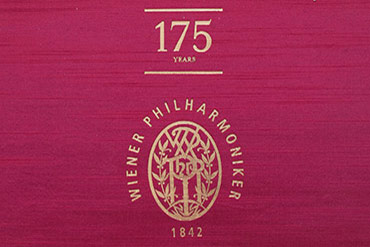
The Vienna Philharmonic and New York Philharmonic Orchestras were both founded in 1842 and throughout their 175 year histories have shared a unique connection. The Vienna Philharmonic Society aided in the presentation of an exhibit of archival material at Vienna’s Haus der Musik in a celebration marking their 175 th Anniversary. This free exhibit, which ran from March 2017 through January 2018, shared the history of these two venerable orchestras with over 208,000 local residents, tourists and school children from all over the world. Many objects, such as the founding documents, concert programs, orchestra and tour photos, musical scores, and letters from Gustav Mahler, were available for viewing by the public for the very first time. The documents revealed the similarities and differences in the histories of the two Orchestras and highlighted the relationships both ensembles share with many celebrated composers - Johannes Brahms, Anton Bruckner, and Gustav Mahler – and conductors including Leonard Bernstein, Zubin Mehta, and Arturo Toscanini. The exhibit also addressed the impact and ramifications of the National Socialist era on both Orchestras.
Interestingly, the Haus de Musik is on the site where the composer and founder of the Vienna Philharmonic Otto Nicolai (1810-1849) lived. It is now home to the archives of the Vienna Philharmonic Orchestra and is accessible to the public. The Nicolai Room houses a few particularly important documents from Austria's musical and cultural past: the Vienna Philharmonic's "founding decree," the program from the first Philharmonic Concert, the first photo of the orchestra, and pictures of Otto Nicolai himself.
Gift of Mahler Score from the New York Philharmonic
and the Family of Leonard Bernstein
In honor of the 175th Anniversary of the two orchestras and the fond relationship Maestro Leonard Bernstein enjoyed as a conductor for both, the New York Philharmonic and the family of Mr. Bernstein presented the Vienna Philharmonic with the score of Das Lied von der Erde by Gustav Mahler. The score contains the original marking made by Maestro Bernstein when he used it in his Vienna debut in 1966.






-Martin-Kubik_DSC7538_T.jpg)
-Martin-Kubik_DSC7527_T.jpg)


